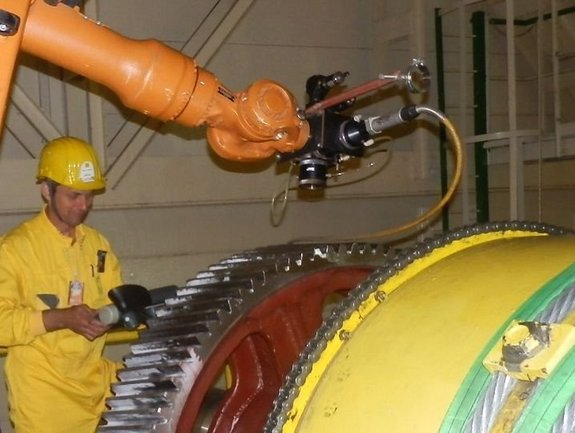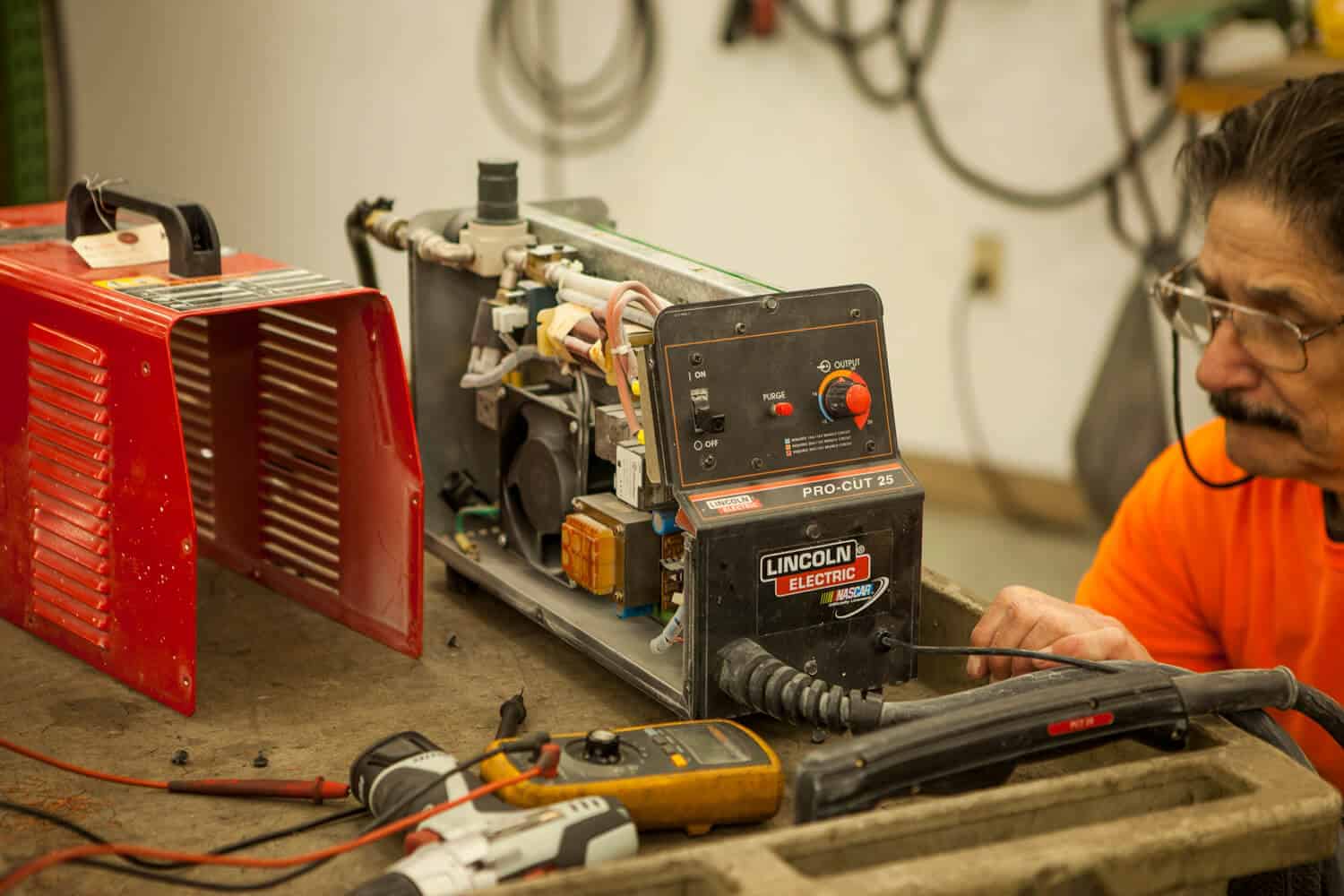Usual Welding Repair Work Issues and Just How to Address Them Effectively
Welding repair work usually encounter a variety of concerns that can threaten the honesty of the end product. Common troubles include inadequate infiltration, porosity, and misalignment, among others. Each flaw offers unique challenges that require details methods for resolution. Recognizing these concerns is vital for welders aiming to boost their outcomes and skills. This conversation will explore these usual welding repair work problems and effective approaches to address them.
Poor Infiltration
Inadequate penetration occurs when the weld steel stops working to fully fuse with the base product, causing weak joints and possible structural failings. This problem usually originates from inadequate heat input, incorrect electrode angle, or inappropriate welding rate. Welders may experience insufficient infiltration because of a mistake of the necessary parameters for a details material density or kind. Furthermore, contamination on the base material's surface area can impede efficient bonding, exacerbating the trouble. To attend to inadequate infiltration, welders must ensure ideal settings on their tools and maintain a clean work surface. Routine evaluation of welds is suggested to recognize any shortages early, allowing for prompt corrections and the avoidance of jeopardized architectural honesty in bonded settings up.
Porosity
Porosity is a common problem in welded joints that manifests as small gas bubbles entraped within the weld steel. This flaw can compromise the integrity of the weld, resulting in lowered stamina and potential failure under stress and anxiety. Montana Mobile Welding and Repair Fabrication. Porosity usually emerges from contamination, moisture, or incorrect welding techniques, which enable gases to run away right into the liquified weld pool. To address porosity, welders should assure correct surface area prep work, maintain a tidy functioning setting, and use appropriate welding parameters. In addition, selecting the best filler product and securing gas can mitigate gas entrapment. Routine examination and screening of welds can aid determine porosity early, ensuring timely corrective activities are taken, thereby preserving the quality and dependability of the bonded structure
Misalignment
Imbalance in welding can occur from various factors, consisting of improper configuration and thermal expansion. Recognizing the source is necessary for reliable resolution. Several modification techniques are offered to realign components and assure structural honesty.
Sources of Imbalance
Welding imbalance commonly originates from a selection of underlying issues that can compromise structural honesty. One primary reason is inappropriate fit-up of parts before welding, which can result in gaps and irregular surface areas. Variations in thermal development throughout the welding process can also cause distortion, particularly if the materials being signed up with have different coefficients of expansion. In addition, insufficient fixturing and securing might fail to hold elements securely in position, leading to activity during welding. Inadequately maintained devices, consisting of welding machines and devices, may introduce variances in the weld grain, additional adding to imbalance. Operator error, stemming from inadequate training or experience, can likewise play a considerable role in developing misaligned welds.

Modification Techniques Offered
Attending to imbalance effectively requires a mix of rehabilitative strategies customized to the specific concerns available. One typical method is making use of components or jigs to hold elements in the correct placement throughout welding, making sure constant placement. Additionally, pre-heating the materials can help in reducing distortion and enhance fit-up. For considerable imbalance, mechanical adjustment techniques, such as making use of hydraulic jacks or clamps, can be used to deal with the position prior to welding. Post-weld warmth treatment may also be needed to alleviate stresses triggered by imbalance. Lastly, mindful inspection and modification throughout the configuration stage can prevent misalignment problems from becoming considerable issues, promoting a smoother welding procedure and enhancing overall architectural integrity.
Distortion
Distortion is a typical difficulty in welding that can develop from various elements, including irregular cooling and heating. Comprehending the reasons for distortion is vital for executing effective avoidance methods. Resolving this concern not only enhances architectural integrity yet also improves the overall top quality of the weld.
Reasons of Distortion
When subjected to the extreme warm of welding, materials often undergo adjustments that can cause distortion. This phenomenon largely develops from thermal development and contraction during the welding procedure. As the weld area warms up, the material increases; upon air conditioning, it acquires, which can create internal stresses. On top of that, uneven home heating across a workpiece can aggravate these stress and anxieties, leading to warping or flexing. The sort of material additionally plays a significant duty; metals with varying thermal conductivity and coefficients of growth might respond in different ways, resulting in unpredictable distortions. Poor joint style and poor fixturing can contribute to misalignment during welding, boosting the likelihood of distortion. Understanding these reasons is vital for effective welding repair service and avoidance techniques.
Avoidance Techniques
Efficient prevention methods for distortion throughout welding focus on managing heat input and ensuring proper joint design. Preserving a constant warmth input helps to decrease thermal expansion and contraction, which can cause distortion. Making use of techniques such as preheating the workpiece can also lower the temperature level gradient, advertising consistent heating. Furthermore, selecting appropriate joint styles, such as T-joints or lap joints, can improve security and lower stress concentrations. Applying correct fixturing to secure the work surfaces in position helpful resources even more aids in maintaining alignment during the welding procedure. Staggered welding series can distribute warmth more uniformly, preventing local distortion. By using these strategies, welders can considerably reduce the chance of distortion and boost the general top quality of their welds.
Splitting
Splitting is a common concern run into in welding repairs, typically arising from numerous elements such as incorrect air conditioning rates, material option, or inadequate joint prep work. The event of fractures can greatly jeopardize the integrity of the weld, leading to potential failings throughout procedure. To address this problem, welders need to initially assess the source, guaranteeing that materials work and suitably chosen for the details application. Furthermore, regulating the cooling price throughout the welding procedure is important; rapid air conditioning can generate stress and anxiety and cause splitting. Correct joint style and prep work additionally contribute to reducing the danger. Carrying out these methods can boost weld high quality and sturdiness, ultimately reducing the possibility of fracturing in ended up weldments.

Insufficient Combination
A substantial issue in welding repairs is incomplete fusion, which happens when the weld steel does not appropriately bond with the base material or previous weld passes - Welding. This issue can cause weaknesses in the joint, possibly endangering the honesty of the welded structure. Elements adding to insufficient blend consist of not enough warm input, incorrect welding method, and contamination of the surface areas being joined. To resolve this concern properly, welders must ensure appropriate pre-weld cleaning and surface area preparation, along with change their welding specifications to attain ample infiltration and combination. Routine assessment during the welding procedure can also aid recognize insufficient combination early, permitting for prompt restorative measures to enhance the total quality of the weld
Overheating
While welding fixings can boost structural stability, overheating presents a considerable difficulty that can result in material deterioration. Excessive warmth throughout welding can modify the mechanical buildings of metals, resulting in reduced strength, increased brittleness, and warping. This sensation is particularly important in high-stress applications where architectural reliability is critical. Identifying overheating can entail visual inspections for discoloration or distortion, as well as keeping track of temperature throughout the welding process. To mitigate the dangers related to overheating, welders ought to employ suitable strategies, such as controlling heat input, adjusting travel speed, and utilizing suitable filler products. Furthermore, carrying out pre- and post-weld warm treatments can assist recover product residential or commercial properties and improve the general high quality of the fixing, guaranteeing long-term performance and security.
Often Asked Inquiries
What Are the Typical Indicators of a Welding Issue?

How Can I Check My Welds for Top quality?
To test welds for quality, one can use visual evaluations, ultrasonic testing, and radiographic methods. Each method assures architectural honesty, recognizes problems, and verifies adherence to specified criteria, inevitably enhancing the reliability of the bonded joints.
What Safety Safety Measures Should I Take While Welding?
When welding, one ought to focus on security by wearing ideal personal protective tools, making sure proper ventilation, safeguarding combustible materials away, keeping a clean workspace, and knowing environments to avoid injuries and accidents.
Can I Repair a Weld Without Redesigning the Entire Joint?
Repairing a weld without renovating the entire joint is possible, depending on the damage anchor (Belgrade). Methods such as grinding, including filler material, or making use of a welding process can successfully deal with details defects while protecting the bordering framework
What Tools Are Crucial for Reliable Welding Fixes?
Essential devices for efficient welding fixings include a welding maker, cord brush, grinder, protective equipment, clamps, and filler products. Each tool plays a crucial role in ensuring quality and security during the fixing process. Porosity generally develops from contamination, wetness, or improper welding strategies, which allow gases to get away right into the molten weld swimming pool. Badly kept equipment, consisting of welding makers and devices, might introduce incongruities in the weld bead, further contributing to misalignment. When subjected to the intense heat of welding, products typically undertake adjustments that can lead to distortion. Breaking is an usual problem encountered in welding repair work, commonly resulting from various aspects such as incorrect cooling rates, material selection, or poor joint preparation. A significant concern in welding repair services is incomplete combination, which occurs when the weld metal does not effectively bond with the base product or previous weld passes.